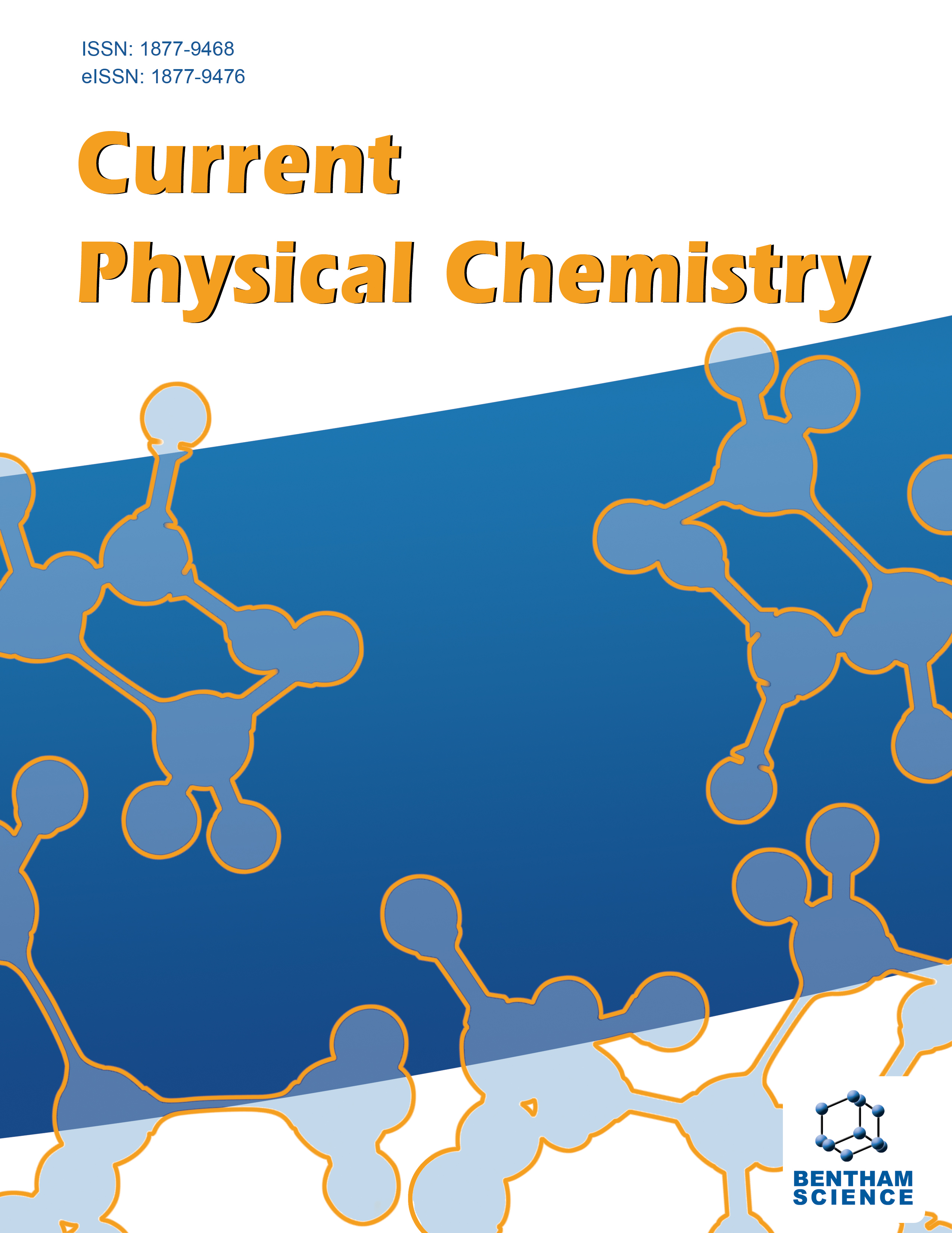- Home
- A-Z Publications
- Current Physical Chemistry
- Previous Issues
- Volume 1, Issue 3, 2011
Current Physical Chemistry - Volume 1, Issue 3, 2011
Volume 1, Issue 3, 2011
-
-
Editorial [Hot topic: New Trends in Photophysics (Guest Editor: Margherita Venturi)]
More LessLight is an essential ingredient of life as poetically expressed by W. Ostwald [1]: “Life is a water mill: the effect produced by the falling water is achieved by the rays of the sun. Without the sun the wheel of life cannot be kept going”. Light is indeed at the basis of life not only because plants produce oxygen and carbohydrates through a rather complex process known as photosynthesis, but also because it sustains our body th Read More
-
-
-
Organic and Supramolecular Materials for LED and Photovoltaic Applications
More LessAuthors: Debdas Ray, Chih-Kai Liang, Nathan D. McClenaghan and Dario M. BassaniSupramolecular self-assembly of organic materials is an interesting alternative for the bottom-up design of organic devices. By using desired supramolecular interactions such as hydrogen bonding, π-π stacking, electrostatic interactions, and other nonconvalent interactions, scientists have begun taking control of the nanoscale ordering of the active layer. Synthetic and supramolecular strategies enable us to construct functi Read More
-
-
-
Quantum Dots Functionalized with Photo- or Redox-Active Species for Luminescence Sensing and Switching
More LessAuthors: Matteo Amelia, Tommaso Avellini, Monica Semeraro, Serena Silvi and Alberto CrediSemiconductor quantum dots are inorganic nanoparticles which, because of their unique size-dependent electronic properties, are of high potential interest for the construction of functional nanodevices. Photoinduced electronand energy-transfer processes between quantum dots and surface-bound molecular species offer versatile strategies to implement functionalities such as luminescence sensing and switching. In this articl Read More
-
-
-
Fullerodendrimers: Photophysical Properties and Applications
More LessAuthors: Ruben Caballero and Jean-Francois NierengartenAmong the large number of molecular subunits used for dendrimer chemistry, C60 has proven to be a versatile building block and fullerene-functionalized dendrimers, i.e. fullerodendrimers, have generated significant research activities in recent years. In particular, the peculiar physical properties of fullerene derivatives make fullerodendrimers attractive candidates for a variety of interesting features in supramolecular c Read More
-
-
-
Recent Progress on Organic and Polymeric Electrochromic Materials
More LessAuthors: Jia Luo, Yuguo Ma, Jian Pei and Yanlin SongElectrochromic materials (ECMs) change their colors when an appropriate voltage is applied. We have discussed various conceptual and practical electrochromic materials beyond the range of classical conducting polymers and inorganic compounds. The advantages and drawbacks of examples have also been discussed in detail. These materials provide a new way to realize low-power consumption multicolor display. Fo Read More
-
-
-
Photochromic Compounds for Fluorescence Nanoscopy
More LessAuthors: Janet Cusido, Erhan Deniz and Francisco M. RaymoDiffraction prevents the spatial resolution of fluorescent species co-localized within areas of nanoscaled dimensions. As a result, conventional fluorescence microscopes cannot resolve structural features at the molecular level. Time, however, can be exploited to distinguish fluorophores within the same subdiffraction area, if their fluorescence can be switched independently, and reconstruct sequentially their spatial distri Read More
-
-
-
Substituted Polyacenes as Prospective Modifiers of TiO2 Surface
More LessAuthors: Marek Oszajca, Przemyslaw Kwolek, Justyna Mech and Konrad SzacilowskiAcenes, especially rubrene and pentacene are bricks-and-mortar of modern organic electronics, while smaller members of the family (anthracene derivatives) are common components of luminescent sensors and molecular logic gates. Recent development in semiconductor-based molecular scale devices has turned our attention towards acenes as modifiers of semiconducting surfaces. This review presents some recent achie Read More
-
-
-
Future Applications of Photo-Driven Molecular Machines
More LessThe construction and operation of photo-driven molecular machines, capable of performing linear or rotary motion at the molecular scale in response to external light stimuli, continue to be a hot topic in the field of nano-science and nanotechnology. A current big challenge in this field is to make these intriguing molecules perform useful tasks. Besides a discussion of novel means used to control linear and rotary motion i Read More
-
Most Read This Month
Article
content/journals/cpc
Journal
10
5
false
en


